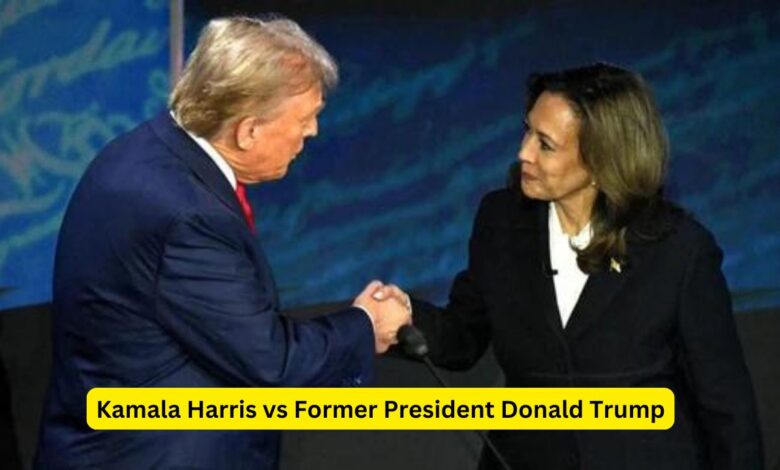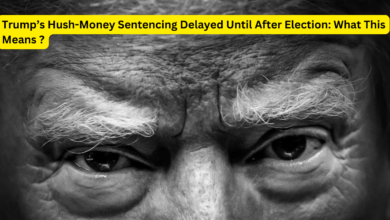Kamala Harris vs Former President Donald Trump

Kamala Harris vs Former President Donald Trump, The first presidential debate between Vice President Kamala Harris and former President Donald Trump marked a significant moment in the 2024 election cycle. As the nation watched closely, this debate promised to be a pivotal event, shaping public opinion and influencing the trajectory of the presidential race. In this detailed analysis, we will delve into the key moments, strategies, and implications of the debate, examining how both candidates performed and what it means for the upcoming election.
Debate Overview: Setting the Stage
The debate took place in a highly charged atmosphere, with both candidates bringing their distinctive styles and perspectives to the stage. The format of the debate allowed for direct exchanges between Harris and Trump, focusing on major issues such as the economy, foreign policy, and social justice. With millions of viewers tuning in, the stakes were high, and the expectations were set for a clash of ideologies and visions for America’s future.
Kamala Harris: Poised and Precise
Strong Opening Statements
Vice President Kamala Harris began the debate with a confident and assertive opening statement. She emphasized her administration’s accomplishments, including economic recovery efforts, healthcare reforms, and progress on climate change. Harris’s strategy was clear: to highlight the successes of the current administration while positioning herself as a champion of continuity and progress.
Effective Use of Data and Statistics
Throughout the debate, Harris effectively used data and statistics to bolster her arguments. By referencing concrete numbers and success stories, she aimed to provide a factual basis for her claims and counter Trump’s criticisms. This approach not only reinforced her credibility but also provided a clear contrast to Trump’s more rhetorical style.
Addressing Key Issues
On critical issues such as healthcare, Harris articulated a vision for expanding access and reducing costs. She argued that the current administration’s policies have laid the groundwork for a more inclusive and efficient healthcare system. Additionally, Harris addressed social justice issues by highlighting ongoing efforts to tackle systemic inequalities and promote racial and economic equity.
Donald Trump: Bold and Assertive
Emphasis on Economic Accomplishments
Former President Donald Trump began his segment with a focus on his administration’s economic achievements. He stressed the pre-pandemic economic growth, job creation, and tax reforms, presenting these as evidence of his effective leadership. Trump’s approach was to remind voters of what he sees as his past successes and to argue that a return to his policies would revive the economy.
Challenging Harris’s Claims
Trump was relentless in challenging Harris’s assertions and the current administration’s record. He questioned the effectiveness of the recent policies and criticized Harris’s performance as Vice President. By adopting a confrontational tone, Trump aimed to unsettle his opponent and appeal to voters dissatisfied with the current administration.
Focus on Immigration and National Security
On immigration and national security, Trump maintained his hardline stance. He argued for stricter border controls and a more aggressive approach to combating crime. His rhetoric was aimed at reinforcing his image as a strong leader capable of protecting American interests and ensuring national security.
Key Debate Moments: Turning Points
Moment of Tension: Healthcare Debate
A notable turning point in the debate occurred during the discussion on healthcare. Harris and Trump clashed over their respective visions for healthcare reform, with Harris advocating for expanded coverage and Trump promoting deregulation and market-driven solutions. This exchange highlighted the stark contrasts between their policies and offered voters a clear choice.
The Economy: Contrasting Visions
Another significant moment was the debate on economic policy. Harris presented data supporting the current administration’s economic recovery efforts, while Trump argued that his previous policies were more effective. This debate underscored the ideological divide on economic management and provided insight into each candidate’s approach to fiscal policy.
Social Justice and Racial Equality
The discussion on social justice and racial equality was also pivotal. Harris highlighted her administration’s efforts to address systemic racism and promote equality, while Trump criticized these policies as ineffective. This segment of the debate was crucial in demonstrating the candidates’ differing views on racial issues and their implications for future policy.
Debate Impact: What It Means for Voters
Public Perception and Media Coverage
The immediate media coverage of the debate reflected a mixed reaction. While some outlets praised Harris for her detailed responses and data-driven approach, others commended Trump for his boldness and directness. The debate’s impact on public perception will likely evolve as voters reflect on the candidates’ performances and policy positions.
Polling and Predictions
Following the debate, polling data will provide insights into how the candidates’ performances influenced voter opinions. Early indications may suggest shifts in support or changes in voter sentiment. Understanding these trends will be crucial for assessing the debate’s overall impact on the election.
Conclusion: Kamala Harris vs Former President Donald Trump
The first presidential debate between Kamala Harris and Donald Trump was a defining moment in the 2024 election cycle. Both candidates showcased their strengths and vulnerabilities, providing voters with a clear view of their policy priorities and leadership styles. As the campaign progresses, the outcomes of this debate will continue to shape the political landscape and influence voter decisions.





2 Comments